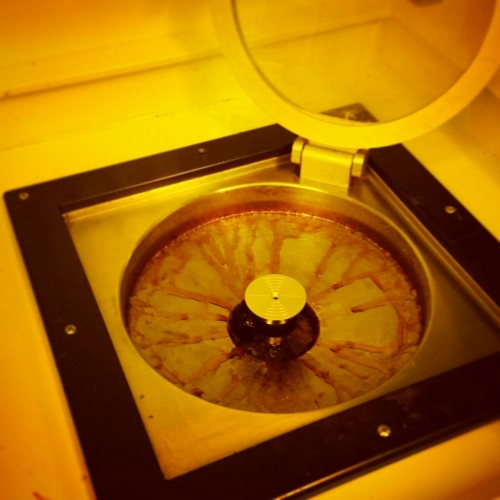#semiconductor
I spent part of the day today spinning photoresist. Photoresists are light sensitive chemicals used in photolithography. They are spun onto the sample at high speeds, using a tool like the one in the picture, to ensure an even coat. Yellow lighting is used in rooms dedicated to resist application and processing to prevent it from getting exposed. Once the resist is applied, a pattern can be transferred to your sample by exposing only certain areas to light.
Post link

credit: University of Houston
By Shardell Joseph
A small, flexible, wearable device has been created that can provide band-aid style human interface, monitoring health or environmental conditions. The human-machine interface (HMI) consists of a small strip of material that can attach to the skin.
The researchers from the University of Houston, USA, have created an ultra-thin electronic device that can collect health, diagnostic, and environment information, with the capacity for medical, personal and professional applications. Focusing on the comfort of the wearable device, an issue that researchers continue to improve.
The researchers explained how the HMI also has potential for uses with prosthetic skin – a robotic hand and other robotic devices – with a HMI. It is this interface that automatically collects and relays information back to the wearer. The researchers described the device in a paper published in Science Advances as ‘ultra-thin, mechanically imperceptible, and stretchable.’
The device was fabricated in a one-step process, which used a metal oxide semiconductor. This was made out of indiu zinc oxide, on a nano-sized polymer base.
‘Indeed, the device has potential for myriad uses not just in wearable technology for humans, but also for robotic applications, to provide a sensor on the surface of a robot that might be able to sense environmental or health conditions, said University of Houston Mechanical Engineering Professor, CunjiangYu.
‘What if when you shook hands with a robotic hand, it was able to instantly deduce physical condition?’ he said in a press statement. Yu claimed that either robots or humans could use the device to test the environment in situations such as chemical spills.

